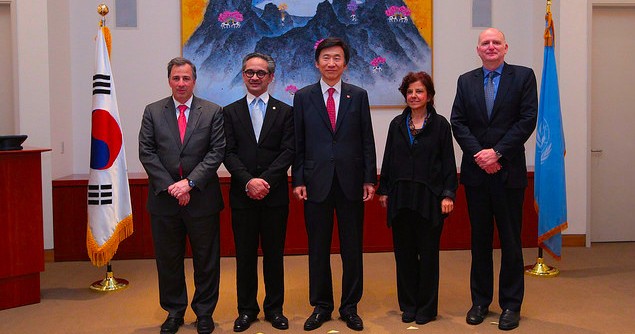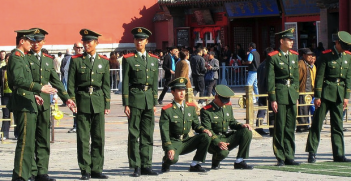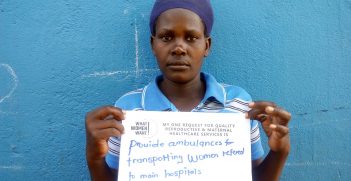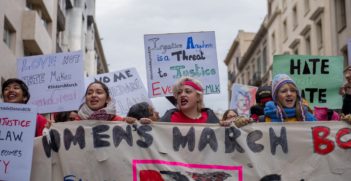How to Explain MIKTA

On the sidelines on the UN General Assembly meetings that commenced Wednesday 24 September, MIKTA states convene once again to discuss burning issues. Hale Yildiz analyses why this newly emerging partnership may be worth taking seriously.
This month in New York, the 69th session of the UN General Assembly will see a meeting of MIKTA in its fringes. This will be the third official meeting of, yes, MIKTA.
In a recent addition to the ever-increasing geopolitical lexicon of global governance, the group emerged in 2013 as an informal low-key partnership among five nations—Mexico, Indonesia, South Korea, Turkey and Australia—that are bounded together by their status of being a middle power in the international stage. Squeezing its way into a platform already dominated by the BRICS, the IBSAs, and the G20s, MIKTA promises to be a worthwhile alphabetic constellation for most of us lost to the increasingly complex global network of alliances. However, even armed with an ambitious agenda to address issues of pressing global importance, such as transnational crime, cyber security, energy security, food security and climate change; MIKTA is currently victim to a superficial and unconvincing public relations campaign in which knowledge and awareness of its utility are both limited and flawed.
To shed light on this seemingly bizarre partnership, we first need to address the raison d’etre for MIKTA: What motivated these five unrelated states to come together in a middle power alliance?
National Aspirations
Mexico came aboard last year with hopes to take part in a relatively independent alliance from the US. Indeed, due to the country’s physical and financial proximity to the superpower, at times with defeating prospects (read NAFTA and TPP), Mexico’s search for alternative forms of power grouping found resonance with MIKTA.
In the case of both Indonesia and Korea, MIKTA potentially provides a critical manoeuvring space insulated from hegemonic spheres of influence governed by China, Russia, Japan and the US.
Australia’s middle power aspirations are a relatively different case, especially with Canberra’s new conservative ruling party. Given the country’s recent moves in undertaking defence-related agreements with Japan and strengthening bilateral ties with India; MIKTA grouping becomes more of a strategy of exerting further influence in the southern hemisphere for a nation seeking to institutionalise its soft power.
For Turkey, on the other hand, the partnership is more of a survival strategy. Given the number of geopolitical regional threats in the country’s perimeters, with the aggressive expansion of the Islamic State pushing up its eastern borders, ongoing Syrian crisis to its south and an unaccommodating European Union to the west; MIKTA comes at a time when Turkey needs all the soft power and regional clout it can get its hands on.
However, all these seemingly differing motivations to construct such a middle power grouping ultimately begs the question: What actually is MIKTA? To avoid the self-defeatingly vague theoretical lingo around global governance, multilateralism and international cooperation—all very nice things however lacking in explanatory rigour—it is perhaps helpful to focus on what MIKTA isn’t.
What MIKTA is not
The general approach to addressing potential commonalities among the five states conventionally brings about discussions around their shared alliance with the US. However, MIKTA is not a “coalition of the willing”.
In fact, one of the strongest points of this alliance is its relative independence from great powers (especially US). It is indeed the case that, despite overarching trade pacts signed with the US, Mexico is also an active leader of the Community of Latin American and Caribbean States (CELAC) and a dominant power in its region. The three Asia-Pacific nations—Indonesia, South Korea and Australia—have also enjoyed relative autonomy from US hegemony and are reasonably shielded from China’s maritime and territorial aspirations. And Turkey’s relations with the American superpower have been slowly deteriorating since Ankara’s refusal to provide military bases for the US in the 2003 invasion of Iraq. The recent developments, such as a $3 billion missile purchase contract signed with China and Ankara’s negotiations with the Kurdish Worker’s Party, despite US reservations, all suggest a more independently operating Turkey.
MIKTA is also not another BRICS; the weightier of so-called middle power groupings. First of all, much unlike its counterpart, the former is a democratic alliance in which all of its member states bear a commitment to democratic, transparent processes. The grouping, in this sense, represents a democratic addition to the global governance framework.
Most importantly, these two partnerships differ with regards to MIKTA’s aforementioned composition of “neutral” or relatively independent states operating in reasonable autonomy, much unlike the disproportionate Russian and Chinese hegemonic weight pulled by the latter. This compositional difference also surfaces in the fact that MIKTA encompasses two middle power Muslim states of Indonesia and Turkey.
Lastly, MIKTA is not an alternative to global governance structures. As Turkish foreign minister, Ahmet Davutoglu, pointed out, the grouping would best serve as an informal and democratic forum of debate that complements—and not replaces—other actors in the international community.
Why MIKTA is useful
All these factors present MIKTA as a unique and necessary add-on to global governance processes. As such, MIKTA has a tendency to prove especially useful due to its espousal of democracy—a highly desired characteristic if one was to manipulate global agendas—as well as its diverse politico-religious character that consolidates an effective multilateral approach to resolving global issues, especially in giving voice to factions that were previously marginalised (e.g. Muslim states whose interests are unrepresented by BRICS). This is compounded by the member states’ status as pivotal swing states in their respective regions, already enjoying preeminent soft power and influence with powerful public diplomacy apparatuses at their disposal.
Yet, MIKTA faces many challenges in terms of legitimacy, viability and visibility. It stands clear that this middle power grouping will only be successful if it manages to maintain all these strengths that deem it different from other entities in the international stage. The General Assembly meetings have now commenced and will further display whether MIKTA can remain a legitimate force with relevance and soft power; as a vital addition to the global governance framework.
Hale Yildiz is a current research intern and editor of Australian Outlook at the AIIA National Office. She can be reached at australianoutlook@20.185.176.227.





